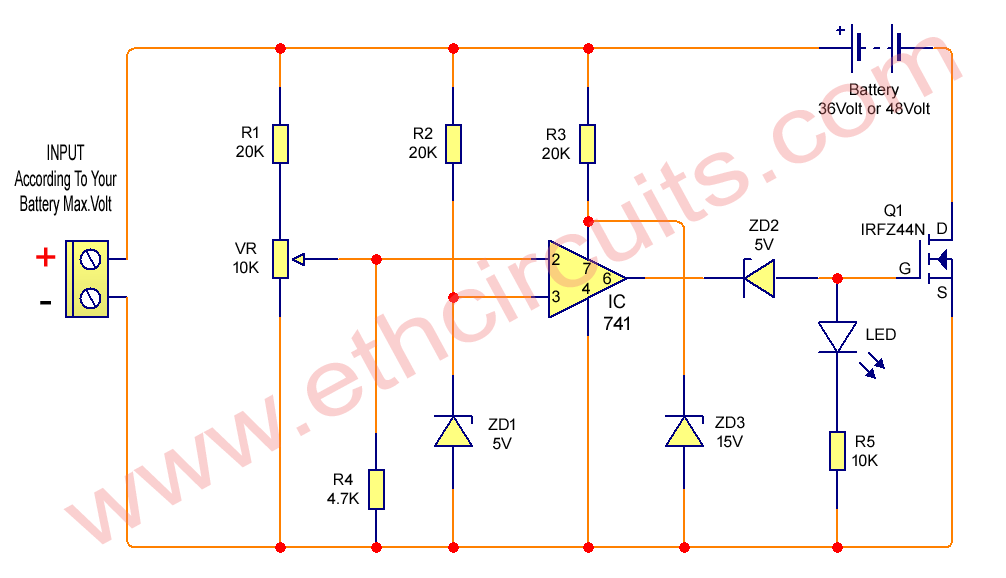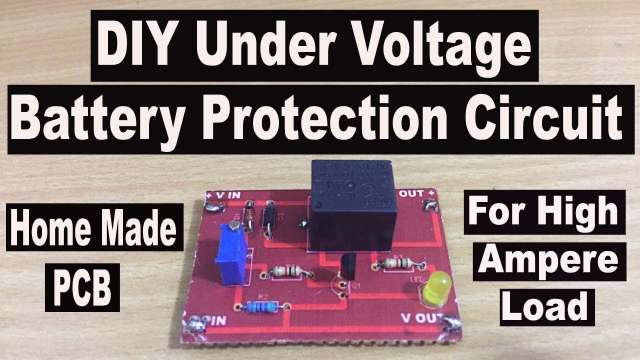36V or 48V Automatic Battery Charger Circuit Diagram
This 36V or 48V Automatic Battery Charger Circuit will charge any 36 Volt or 48 Volt battery. This will charge 36 Volt battery up to an optimal 42 Volt full charge level and 48 Volt battery up to an optimal 54.6 Volt.
Please check your battery maximum Voltage and use input voltage according to your battery maximum voltage, in this circuit we utilizing very ordinary components. The circuit is highly accurate with its over charge cut off features.
36V or 48V Automatic Battery Charger Circuit Diagram
36V | 48V Battery Charger Circuit Description or Working
As shown in the circuit diagram, the main element in the circuit is the opamp IC 741, which is listed as a comparator.
Pin # 3 which is a flexible IC input refers to a 5V fixed voltage with the following zener ZD1 / resistor R2 network.
Other inputs used with sensor voltage are actually the combined voltage from the supply and from the battery, in other words the charging voltage used in the battery for charging.
The resistance pin in pin # 2 and the pre-set form a voltage separator that is initially adjusted so that the voltage at this pin stays below the voltage level in pin3, which is the reference voltage set to 5v by the zener diode.
The preset is set in such a way that the voltage at pin # 2 rises above the 5V mark as soon as the electrical power of the battery rises above the battery level limit.
When this happens, the output of the opamp to the ground is turned off mosfet, and disconnects the voltage to the battery.
Initially as the battery voltage and maximum power output from the Input supply Voltage remain below the full charge level of the battery, the opamp output remains high and our mosfet remains ON.
This allows the battery voltage to be charged, until the above limit is reached which automatically prevents the battery from charging.
Mosfet can be selected according to AH battery level.
Parts List for 36V or 48V Battery Charger Circuit
- IC 741 1PC
- Zener Diode ZD1 and ZD2 5V, ZD3 15V
- Multiturn Variable Resistor VR 10K
- Mosfet IRFZ44N or according to your battery AH
- Resistor R1, R2, R3 20K, R4 4.7k, R5 10K all resistor 1/4watt
- Transformer SMPS for Input according to your battery description






















